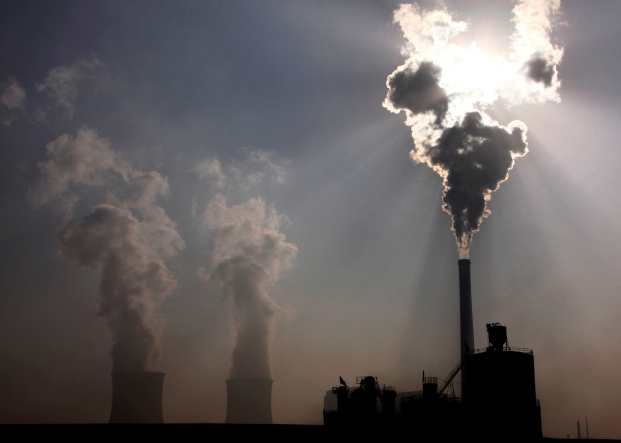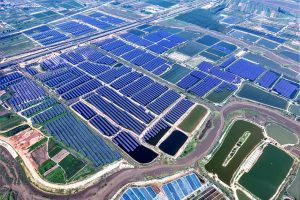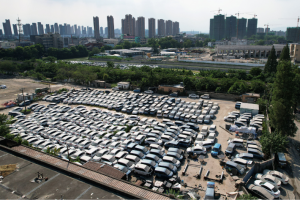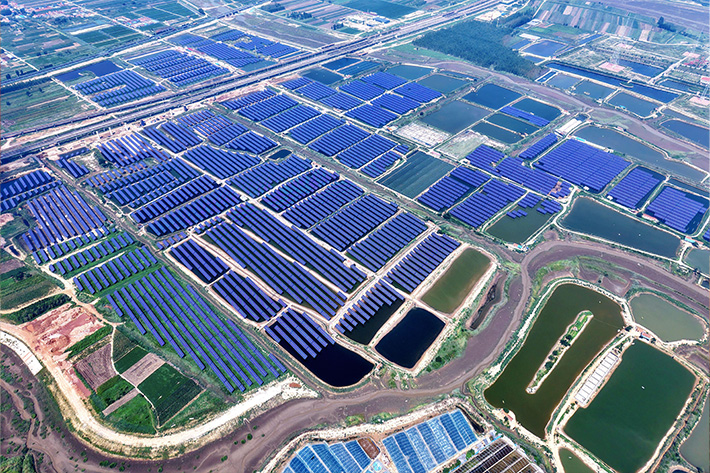China has announced plans to use biomass, green ammonia and carbon capture, utilisation and storage (CCUS) technology to tackle emissions from its biggest polluting industry – coal-based power.
In an action plan issued in Monday, China’s National Development and Reform Commission (NDRC) outlined moves to use a mix of technology-led innovation and state financial backing to manage emissions emanating from coal-fired power.
China’s first low-carbon projects, using these approaches, will come online next year, the NDRC said.
Also on AF: Climate Crisis Has Cost China Billions Already This Year
The average emission of those projects will be 20% lower compared with 2023 levels, it added.
The directives come after China’s use of non-fossil fuel sources to produce electricity hit a record-high in May. At the same time, the country’s use of coal to generate electricity fell to record low.
But “coal-fired power will still play a role in guaranteeing energy security for a certain period of time”, the NDRC said.
It cited “the randomness and volatility of renewable energy power” as the primary reason for its continued dependence on coal.
NDRC, China’s top economic planner, outlined a three-pronged approach to implement the new approaches.
It included financial support through ultra-long-term special government bonds and other funding channels, along with policy measures such as green bonds, to fund low-carbon projects.
It also called on power grid companies to prioritise support for low-carbon projects, along with strengthening tech research on burning biomass, preparing low-cost green ammonia and optimising CCUS implementation.
Are these projects financially viable?
The NDRC expects to broaden the use of low-carbon methods in power generation by 2027, banking on construction and operation costs to be “significantly reduced” by then.
But analysts are questioning the feasibility of deploying new technologies due to their high costs.
“Biomass power plants in China are not financially viable without subsidies, largely due to inadequate fuel supply,” Shen Xinyi, analyst at the Centre for Research on Energy and Clean Air told Reuters.
“I’m not certain it’s wise to burn green ammonia in coal power plants [given the costs], especially when there is still potential to increase the use of renewable power, such as by enhancing inter-province power trade and improving the flexibility of coal power plants,” Shen said.
The development of CCUS technology also faces the high-cost challenge.
Even so, development of these approaches will be key for China to meet its 2060 net zero goals, considering its large dependance on coal for the power industry.
What other tech does China need?
Electricity generation accounts for more than 40% of China’s total carbon emissions. To manage these, China has directed much of its focus on CCUS technology, which aims to capture carbon dioxide from large emissions sources.
The country has taken a lead in patents related to carbon capture technology, accounting for more than half of global filings, according to Nikkei Asia analysis in May.
But according to the United Nations’ Intergovernmental Panel on Climate Change (IPCC), carbon removals will play a much more important role in combating emissions and limiting global warming to 1.5 degrees Celsius.
Despite that, carbon dioxide removal (CDR) processes — that extract CO2 directly from the atmosphere with an aim to store it for a long period of time — are still on the back foot in China.
According to an assessment by Carbon Brief, while China funds many CDR projects, its financial support for these remains much smaller than other carbon-emitting economies.
The average funding for a CDR project in China is $74,000, compared with $979,000 in Canada and the US, $1,406,000 in the EU27 and $582,000 in non-EU European countries, according to the report.
- By Vishakha Saxena
Note: Minor edits were made on July 17, 2024.
Also read:
China Building More Solar, Wind Than Rest of World Combined
China Shifting to ‘Green’ Steel Production as EU Levy Looms
China’s Clean Energy Spending Set to Match US-Europe Combined in 2024
US, EU Can’t Meet Climate Goals Without China’s Cheap Green Tech
Critical China Factory Hubs Face Greatest Climate Change Risk
China Misses 2023 Emissions Targets, ‘Climate Credibility at Risk’
Study Shows Half of China’s Big Cities Sinking, Rising Seas Risk
Fossil Fuel Phase-Out ‘Unrealistic’, China Climate Chief Warns
























